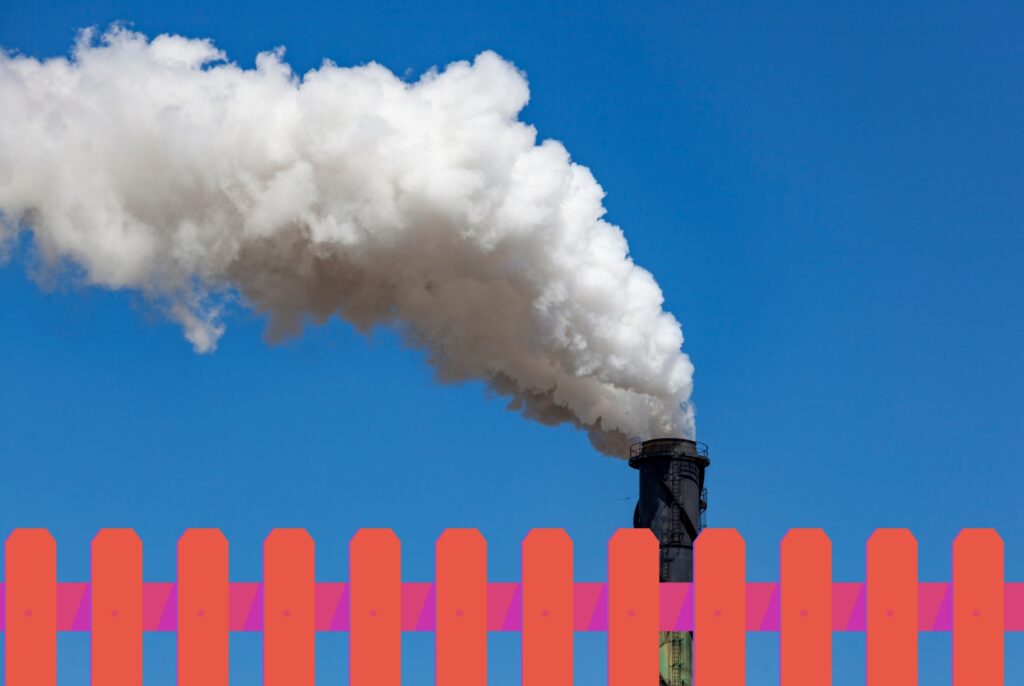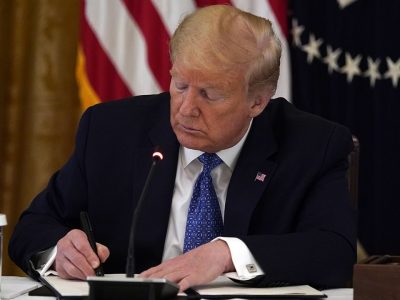Is 2025 the Year of the Carbon Tax?
Carbon border adjustment mechanisms are increasingly the talk of Washington. UCLA Law’s Kimberly Clausing explains some of the options on the table.

There’s a big, important tax debate looming next year—one with opportunities and risks for climate policy, particularly the idea of a carbon tax. It can be hard to see this debate thanks to the daily churn of the 2024 presidential election, but it’s there on the horizon if you squint. For one thing, we’ll likely close out this year as the new “hottest year on record” just before the next President of the United States takes office. Then by the end of 2025, much of the Trump tax cuts, known officially as the Tax Cuts and Jobs Act, will expire. And shortly after that, in January 2026, the European Union’s own Carbon Border Adjustment Mechanism will take effect, applying tariffs to products from trade partners that don’t price carbon the way the EU does. All this has created an opening for lawmakers to tackle carbon pricing as they revisit the tax code, and possibly create a carbon tax.
There are multiple legislative proposals on this general subject, including the Clean Competition Act by Democratic Senator Sheldon Whitehouse and the Foreign Pollution Free Act by Louisiana Sen. Bill Cassidy and other Republicans. This month, a bipartisan contingent of House members introduced a different bill that could eventually pave the way for carbon import tariffs. Representatives John Curtis (R-Utah) and Scott Peters (D-Calif.) unveiled their version of the so-called PROVE IT Act (that’s the “Providing Reliable, Objective, Verifiable Emissions Intensity and Transparency Act”). The act has 20 co-sponsors equally divided between their two parties, E&E reports. But there are big differences between all these proposals.
I asked my UCLA Emmett Institute colleague Kimberly Clausing to walk through some of the options on the table. Clausing is a tax law and policy professor at UCLA Law and served in the Treasury Department during the first half of the Biden Administration.
Q: What would you say are the purposes of a carbon border tax adjustment?
A: Jurisdictions use carbon border adjustment mechanisms (CBAMs) to address the competitiveness and leakage concerns that result from imposing mitigation costs on domestic firms. The best example is the European Union CBAM. The European Union charges EU-based firms for their emissions, so they also will levy a charge on imported goods (in several key emissions-intensive sectors) of the same magnitude. This means that all goods entering the European market will face the same emissions charge. This reduces the competitiveness concerns of European firms who might otherwise fear that foreign competitors would enjoy an unfair advantage due to lower (or nonexistent) emissions charges abroad. CBAMs also reduces concerns about “leakage”; leakage occurs when climate policies become less effective if consumers substitute toward unregulated sources of production or if firms move production toward unregulated locations.
Q: How is Europe’s implementation of a CBAM going so far?
A: Europe is in the early stages of implementation; levies will not begin until 2026, and such levies will not be very large until 2030, when free emissions allowances are phased out more steeply. Countries exporting to Europe are facing compliance costs as they seek to measure and document the carbon emissions associated with their production. They are also contemplating possible policy responses. In part due to the EU CBAM, several countries have announced that they are considering carbon pricing. Since the EU will credit exporting countries for carbon levies at home, this policy step can convert European tariff revenue into domestic revenue.
Q: What is the case for policymakers tackling this in 2025?
A: In 2025, many tax cuts enacted as part of Trump’s Tax Cuts and Jobs Act will expire. There is strong sentiment on both side of the aisle to extend at least some of these tax cuts, but a full extension could reach a cost of $5 trillion over ten years. Alongside rising deficits, debt, and interest rates, this means that Congress may be seeking either spending cuts or revenue increases to help stem fiscal gaps. That could be either good or bad news for climate policy, depending on the path chosen. As I’ve shown in recent work, even modest moves toward carbon pricing could provide an important source of revenue, while turbocharging take-up of the Inflation Reduction Act (IRA) tax credits, leading to large emissions reductions. Building on IRA, carbon pricing can also be done without imposing significant costs on households.
Q: What are the basic differences between the Clean Competition Act by Dems and the Foreign Pollution Free Act by Republicans?
A: As I’ve argued elsewhere, the Clean Competition Act is a much better approach. Foremost, it is less discriminatory in design, as it subjects all firms (domestic and foreign) to an emissions charge if their pollution exceeds a certain threshold. The threshold is an important policy dial. As the threshold falls (which happens over time in the legislation), the policy approaches a carbon price with an accompanying CBAM, aligning US efforts with those abroad. This can help create momentum internationally for approaches that price carbon.
In contrast, the Foreign Pollution Fee would only levy charges on imports, discriminating in favor of domestic producers, who would face no emissions charges. This approach would be in clear violation of world trading system norms, and it risks unravelling more productive approaches abroad. Since US companies would face clear competitive advantages relative to companies in countries that price carbon, it would become more difficult for foreign countries to persist with approaches that impose costs. Further, exporting countries may retaliate in response, risking harmful trade disputes that threaten international cooperative efforts.
Q: What’s your view on the PROVE IT Act and whether this is a helpful step forward?
A: By working on the measurement and verification efforts that are needed to implement carbon pricing and carbon border adjustment, the PROVE IT act can be a useful step forward. It is important, however, to avoid the pitfalls discussed above. Climate change is a global collective action problem, and U.S. policy should recognize the importance of ensuring that our efforts do not inhibit, but rather encourage, productive efforts abroad.
Reader Comments
4 Replies to “Is 2025 the Year of the Carbon Tax?”
Comments are closed.







Climate change happens slowly and is largely unaffected by human activities. We already pay “carbon taxes” which drive up the costs of utility bills, fuel, income taxes, sales taxes, property taxes, consumer products, etc. There has never been successful demonstration of “climate mitigation” which is totally fraudulent. Hopefully Trump will curtail this massive government waste.
Atmospheric carbon dioxide and water vapor are both greenhouse gases but neither is a “pollutant”. Instead, carbon dioxide is a fake air pollutant that has no adverse health effects and only a negligible and insignificant impact on weather and climate. We can safely ignore so-called “climate change” and live a happy and productive life.
Cheers !!!
“Jim” is wrong on all of the above, of course, and even the world’s fossil fuel companies disagree with those claims. Cheers!
Dear Evan,
Do you know any climate scientists, scholars, or other experts at the Emmett Institute who could provide credible insight and answers to the following question:
How many tons of CO2 must be removed from earth’s atmosphere in order to reduce average global atmospheric temperature by 1 degree F ?